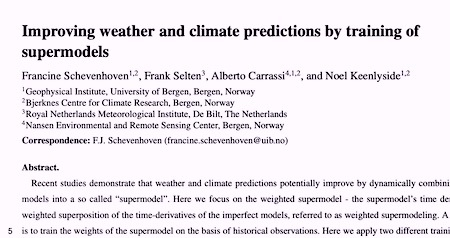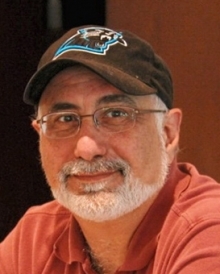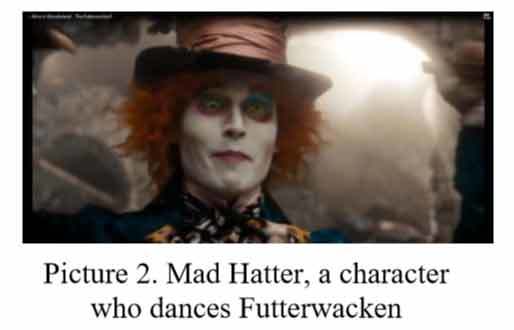Marc Abrahams's Blog, page 144
June 25, 2019
Improving Weather and Climate Predictions by Training of Supermodels
The authors of this weather-and-climate study did not resist the allure of shiny words:
“Improving Weather and Climate Predictions by Training of Supermodels,” Francine Schevenhoven, Frank Selten, Alberto Carrassi, and Noel Keenlyside, Earth System Dynamics, epub 2019. (Thanks to Tom Gill for bringing this to our attention.) The authors, at the University of Bergen, Norway, Bjerknes Centre for Climate Research, Bergen, Norway, Royal Netherlands Meteorological Institute, and Nansen Environmental and Remote Sensing Center, Bergen, Norway, report:
“Recent studies demonstrate that weather and climate predictions potentially improve by dynamically combining different models into a so called “supermodel”. Here we focus on the weighted supermodel – the supermodel’s time derivative is a weighted superposition of the time-derivatives of the imperfect models, referred to as weighted supermodeling…. Here we apply two different training methods to a supermodel of up to four different versions of the global atmosphere-ocean-land model SPEEDO.”

June 24, 2019
Derridian deconstruction of the Futterwacken Dance [new study]
Itsnaini Lailiyah Ananda of Airlangga University, Surabaya, East Java, presents (what is believed to be) the first Deconstruction of scene of Futterwacken Dance in Alice in Wonderland movie by Tim Burton in the latest issue of the university’s arts journal Terob, Vol XI, Apr. 2019.
“Derridian structure of thinking explain the latent meaning behind non-empty texts and starting from a text as a network of diversity of rapid forces and unclear references (Derrida, 1982: 230). Coming from that statement, deconstruction is an effort to emancipate text and interpretation that exist and reject the absolute presence.”

June 21, 2019
Innovative Scientists Talk About Their Childhood (5): Suzana Herculano-Houzel’s Ink-in-Water
Here’s Suzana Herculano-Houzel, talking about the ink in water that, when she was a child, excited Suzana in a way that led to her eventual unusual career. Suzana studies how brains do some of the astounding things brains do.
ABOUT THIS LITTLE VIDEO SERIES—This is part of a series of sessions we (David Hu and I, and a film crew) recorded at Georgia Tech. We assembled a little group of scientists (including David) who are renowned for looking at questions others might overlook, and doing research in inventive, clever ways.
The question we asked them: “What happened when you were a kid that somehow led—much later—to your doing unusual science?”
The scientists: David Hu, Suzana Herculano-Houzel, Frans de Waal, Nicole Sharp, Diego Golombek, and Olga Shishkov. Follow the links on their names to begin exploring some of their work!
A FURTHER NOTE ABOUT THIS SERIES: These little videos are not quite as good as they ought to have been, due to curious decisions made by the video editor. The most obvious of those strange decisions was to dose everything with goopy, slightly distracting music. The editor also objected to some of the content of the videos, deeming them somehow too offensive to record. The lesson we learned: choose our video editor more carefully.

June 20, 2019
Odorous preoccupations of James Joyce – the low down [study]
 James Joyce may not have had particularly good eyesight, but (some say) he at least partially made up for it with a heightened awareness of smells. Especially bodily ones. Which he often wrote about. In great detail.
James Joyce may not have had particularly good eyesight, but (some say) he at least partially made up for it with a heightened awareness of smells. Especially bodily ones. Which he often wrote about. In great detail.
But do academic works about Joyce’s evident preoccupations with flatulence – which have led some scholars to suggest that he might have been an eproctophiliac, or even a renifleur – sometimes have a whiff of overegging about them?
Dr Crispian Neill (University of Leeds, UK) points out that :
“Joyce’s taxonomy of flatus does not provide a differentiation based upon odorous characteristics. Rather, the characteristic intangibility of the fart as a gaseous emanation is offset by the narrative’s ascription of spatial and auditory properties, which enables the encoding of flatulence within the text.”
And further :
“The unstable linkage between an odor and its presumed source or odor object recalls the linguistic unit’s arbitrary pairing of sign and object, an interconnection signaled in representations of odor throughout Joyce’s writing, as smells—flatulent or floral—become aromatic signs that float free from their original referents.”
See: The Afflatus of Flatus: James Joyce and the Writing of Odor in the journal James Joyce Quarterly, Volume 53, Number 3-4, Spring-Summer 2016 pp. 307-326, and which can be savoured in its entirety here.
[Research research by Martin Gardiner]

June 19, 2019
DFMB (Deep Fried Mars® Bars) research update
A 2014 paper published in the Scottish Medical Journal elucidated (for the first time) the acute effects of a Deep Fried Mars® Bars (DFMBs) on brain vasculature. Since then, research involving DFMBs has not ceased. A 2016 study from Dr Christine Knight at the University of Edinburgh, Scotland, has (again, for the first time) examined coverage of DFMB stories in the Daily Record/Sunday Mail and the Scottish Sun/Sun on Sunday newspapers.
“Analysis showed that both newspapers clearly associated the DFMB with Scotland. Further, both newspapers portrayed the DFMB and the broader “deep-fried” Scottish diet stereotype ambivalently (mixed positive and negative associations). However, the Daily Record actively criticised the DFMB stereotype much more often than did the Scottish Sun. These findings suggest that the Scottish population encounters different messages in the press about food and nutrition from people elsewhere in the UK, and that these messages vary depending on choice of media in Scotland.”
See: Negative stereotypes of the Scottish diet: A qualitative analysis of deep-fried Mars bar references in bestselling newspapers in Scotland, 2011–14, in the journal Appetite, Volume 103, Pages 1-458 (1 August 2016)
Photo credit: ‘unknown’ @Wikipedia
Research research: Martin Gardiner

June 18, 2019
Microdosing oneself study – still time to participate
If you’d like to participate in the Imperial College (London, UK) / Beckley Foundation (Oxford, UK) Naturalistic Self-Blinding [psychedelic] Microdose Study, there is still time – as it’s been extended to plant-based psychedelics (mushrooms &etc) as well. An important detail, participants should note that :
Also see : Founder and director of the Beckley Foundation, Amanda Feilding features in a 2001 Japan Times report regarding the benefits of drilling a hole in one’s skull.
[ research research by Martin Gardiner ]

June 17, 2019
Innovative Scientists Talk About Their Childhood (4): David Hu’s Sister Being Born
Here’s David Hu talking about seeing the birth of his sister—an experience that, when he was a child, excited David in a way that led to his eventual unusual career. David uses math and physics—and experiments—to try to understand some of the seemingly simply, scientifically mystifying things that happen in nature every day.
ABOUT THIS LITTLE VIDEO SERIES—This is part of a series of sessions we (David Hu and I, and a film crew) recorded at Georgia Tech. We assembled a little group of scientists (including David) who are renowned for looking at questions others might overlook, and doing research in inventive, clever ways.
The question we asked them: “What happened when you were a kid that somehow led—much later—to your doing unusual science?”
The scientists: David Hu, Suzana Herculano-Houzel, Frans de Waal, Nicole Sharp, Diego Golombek, and Olga Shishkov. Follow the links on their names to begin exploring some of their work!
A FURTHER NOTE ABOUT THIS SERIES: These little videos are not quite as good as they ought to have been, due to curious decisions made by the video editor. The most obvious of those strange decisions was to dose everything with goopy, slightly distracting music. The editor also objected to some of the content of the videos, deeming them somehow too offensive to record. The lesson we learned: choose our video editor more carefully.

June 14, 2019
This Person is About 98%
 “Although he has written books called What it Means to be 98% Chimpanzee and Why I am Not a Scientist, he would like it to be known, for the record, that he is about 98% scientist, and not a chimpanzee. ”
“Although he has written books called What it Means to be 98% Chimpanzee and Why I am Not a Scientist, he would like it to be known, for the record, that he is about 98% scientist, and not a chimpanzee. ”
He is Jonathan Marks.

June 13, 2019
The Elephant in the Image [new study]
Can state-of -the-art visual analysis software always be relied on to find the elephant in an image? Akshay Raj Dhamija and colleagues at the VAST lab (Vision And Security Technology) at the Department of Computer Science, at University of Colorado, at Colorado Springs, US. have recently investigated the robustness of automated elephant detector systems.

The team point out that whilst object detection research has a long history in computer vision (more than 50 years) it’s not always 100% accurate. Even using the latest versions of large-scale deep-learning neural-networks.
“While current state-of-the-art detectors are trained to handle backgrounds, their designs are not well equipped to address unknown objects, which are often incorrectly detected as the existing classes with a high confidence.”
[ note mis-identified elephants above ]
A recurring problem is that current systems still come across difficulties in deciding which regions in an image are ‘objects’ (of interest) and which are just insignificant backgrounds.
“Therefore, we consider it important that detection systems eventually learn to create a separation between background and unknown objects, enabling new objects to be identified. Currently, there is no such architecture and a design is left for the future work.”
See: Identifying the Elephant in Object Detection
Also see: (from the VAST lab) Detecting and Classifying Scars, Marks, and Tattoos Found in the Wild
[ research research by Martin Gardiner ]

June 12, 2019
Innovative Scientists Talk About Their Childhood (3): Olga Shishkov’s Bug Pals
Here’s Olga Shishkov talking about some bugs that, when Olga was a child, excited Olga in a way that led to her eventual unusual career. Olga studies how maggots manage to do some of the surprising, impressive things they do.
ABOUT THIS LITTLE VIDEO SERIES—This is part of a series of sessions we (David Hu and I, and a film crew) recorded at Georgia Tech. We assembled a little group of scientists (including David) who are renowned for looking at questions others might overlook, and doing research in inventive, clever ways.
The question we asked them: “What happened when you were a kid that somehow led—much later—to your doing unusual science?”
The scientists: David Hu, Suzana Herculano-Houzel, Frans de Waal, Nicole Sharp, Diego Golombek, and Olga Shishkov. Follow the links on their names to begin exploring some of their work!
A FURTHER NOTE ABOUT THIS SERIES: These little videos are not quite as good as they ought to have been, due to curious decisions made by the video editor. The most obvious of those strange decisions was to dose everything with goopy, slightly distracting music. The editor also objected to some of the content of the videos, deeming them somehow too offensive to record. The lesson we learned: choose our video editor more carefully.

Marc Abrahams's Blog
- Marc Abrahams's profile
- 14 followers






